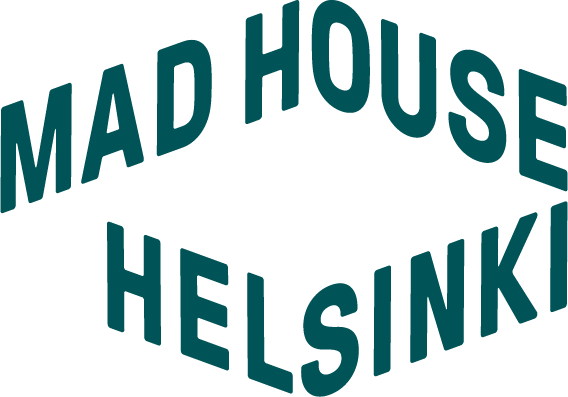Interview with Asiya Wadud
Asiya Wadud & Howard Smith's "Motionless Dancers" environmental artwork in Arabia, Helsinki. Image: Eva-Liisa Orupõld
Mad House: echo exhibit takes place alongside of Howard Smith's environmental artwork "Motionless Dancers" in Arabia. How did you become interested in Howard Smith and this artwork? What kind of work is it?
Asiya Wadud: I was introduced to Howard Smith's work sometime in the summer of 2021, but I don't remember the occasition that precipitated it. Maybe it was during a visit to Fiskars, Finland, where I saw one of Smith's public sculptures in front of the art museum in Fiskars. Smith worked with textiles, metal works, wood, found materials and ceramics. His works spans wood and metal sculptures, collage prints, ceramic sculptures and fabric tapestries. But stating it like this feels limiting to the vast range of Smith's body of work. It seemed that he could always make something out of nothing - whatever materials he had at his disposal, he would create something fresh. I find whimsy, comedy and momentum in his work, and it keep calling me back. The presence of Smith's work was such an awakening for me, in no part because Smith was a Black American artist who, like myself, found himself in Finland. Somehow his works felt both like talisman and sentry - sentry in the sense that guarding and protecting the place. I had a desire to know his work deeply, and the following summer I returned to Fiskars (also Smith's home for the final three decades of his life) for a residency arranged through Onoma Fiskars. It was there that I began work on what became a collection of poems and essays, largely in dialogue with Smith's work. This poetry collection, Mandible Wishbone Solvent, was published by the University of Chicago Press earlier this year.
MH: The work will be in two parts: a one-on-one conversation with a participant at Smith's artwork, from which you will write a poem, and it will be published in Mad House Publication Vol. 5 in December 2024. Where did you get the idea for the work? Have you previously created a similar two-part work?
AW: I like the idea of accumulation and gathering, that space where you don't necessarily have to see the final object in its entirety. What I'm most interested in is work that focuses on process - really thinking about and paying attention to the steps along the way and how they might ultimately lead to something. In this sense, I'm very interested in a two-part project because it allows space for a moment of accumulation and then more space, or another space, for writing the poem that emerged during the first phase. It wasn't until the Echo Exhibit project that I had the opportunity to work on a two-part process, first Echo Exhibit premiered in New York and later in Trondheim, Norway. Each poem written has a co-attribution, as it was written by the participant and by me.
MH: You mention that the first part is a conversation between you and the participant. What do these discussions typically focus on, and how do you translate them into poetry?
AW: I envision these conversations to be improvisational and roving. I have a few ideas of some of the questions I'm interested in engaging with, but I also hope that there will be a sense of possibility and freedom within each conversation. Each conversation can reflect the individual interests of the participants, and I feel open to following the conversation wherever it may travel. In earlier editions of Echo Exhibit, the most exciting conversations were the ones that traveled and moved intuitively. I hope that Howard Smith's Motionless Dancers will somehow find their way into conversations with each participant, but let's see if that's possible and how it becomes possible.

